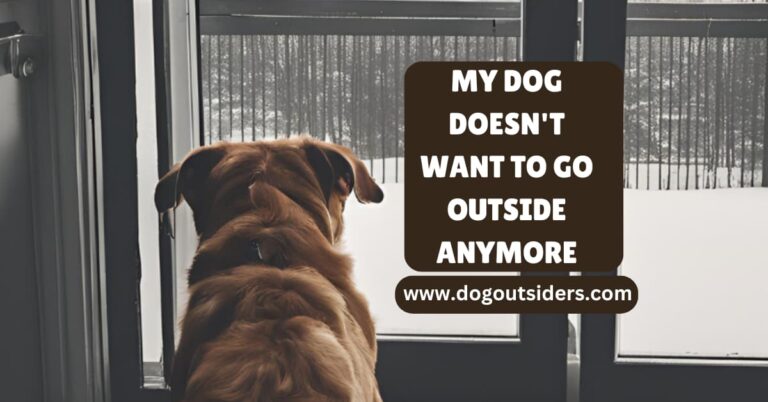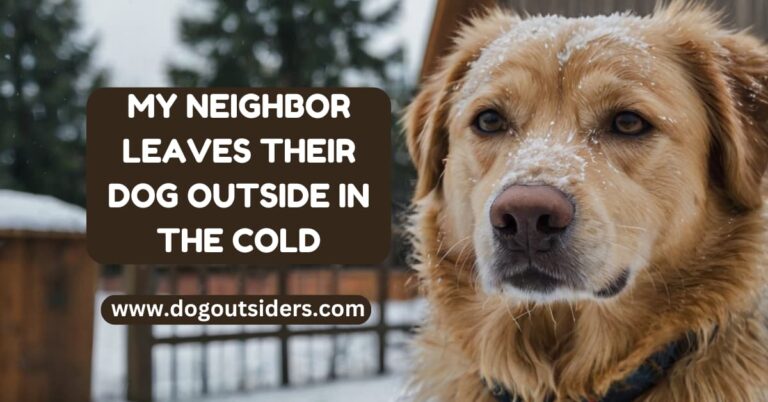Have you ever wondered why your old dog refuses to go outside to pee? It can be annoying when you’re all set for a walk, but your furry pal has different ideas. I have some helpful tips to help you deal with this problem. We’ll discuss why your old dog might be acting this way and suggest solutions to get them back to peeing outside happily. If you’re tired of cleaning up messes inside or feeling trapped at home, let’s figure out how to get your old dog back on track with their potty routine by using pee pads or a leash.
Key Takeaways
- Understanding Your Dog: Recognize why older dogs may resist going outside to pee to address the issue effectively.
- Consistent Training: Implement potty training basics tailored for older dogs to establish a routine and reinforce positive behavior.
- Gradual Transition: Guide your dog from using pee pads indoors to going outside gradually to facilitate the change smoothly.
- Consider Age Factors: Take into account your dog’s age when potty training, adjusting expectations and methods accordingly.
- Breed-Specific Approach: Understand how your dog’s breed influences training success and adapt your methods to suit their characteristics.
- Positive Reinforcement: Use positive reinforcement techniques consistently to encourage desired bathroom behaviors and create a rewarding experience for your dog.
Old Dog Won’t go Outside to Pee
It can be concerning when an old dog refuses to go outside to pee. There could be several reasons for this behavior. First, consider any physical issues that may be causing discomfort or pain when your dog tries to go outside.
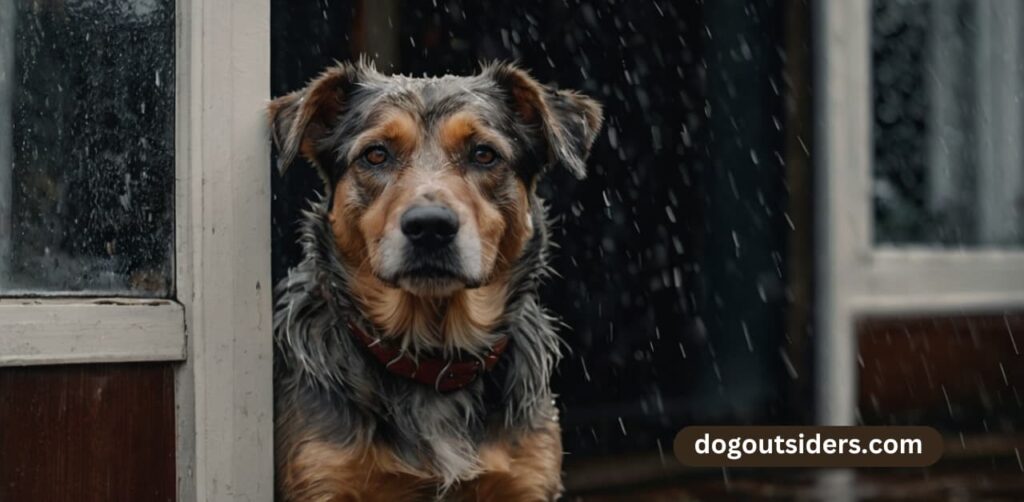
Arthritis, urinary tract infections, or other health issues could be making it difficult for your dog to move or urinate comfortably and pee outside. Additionally, older dogs may struggle with bladder control, leading to accidents inside the house. It’s essential to consult with your veterinarian and dog trainer to rule out any medical conditions, discuss potential solutions, food, and back.
In some cases, behavioral issues or anxiety could also be contributing to your dog’s reluctance to go outside. Patience, positive reinforcement, and possibly professional training may help address these issues. Remember, older dogs may require extra care and understanding as they navigate changes in their health and behavior.
Why Older Dogs Resist Outdoor Potty
Health Issues
Older dogs may resist outdoor potty due to physical discomfort caused by health issues such as arthritis or urinary tract infections. These conditions can make it painful for them to squat or walk long distances.
e older dogs experience incontinence, leading to accidents indoors as they struggle to control their bladder. This can result in a reluctance to go outside, fearing embarrassment or discomfort.
Behavioral Factors
Anxiety and fear can play a significant role in an older dog’s refusal to go outside to pee and poop. Changes in the environment, loud noises, or traumatic experiences can trigger anxiety, causing them to avoid outdoor potty breaks.
The loss of routine due to changes in the household or schedule can confuse older dogs, making them hesitant to go outside. They may prefer familiar indoor spaces like the house over unpredictable outdoor environments.
Decoding Your Dog’s Bathroom Behavior
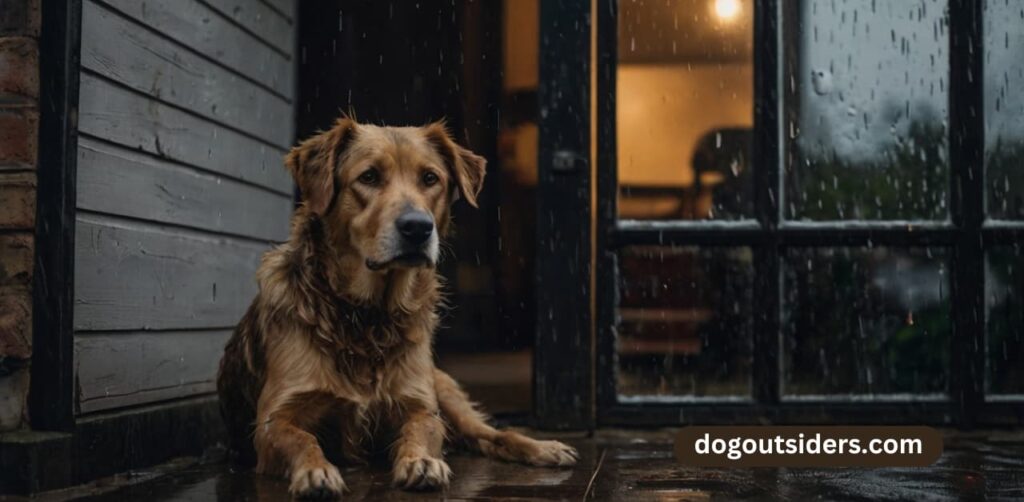
Understanding Urine Patterns
Dogs communicate through urine marking, a natural instinct to claim territory or attract mates. Behavioral issues like anxiety or cognitive decline can disrupt these patterns. Watch for changes.
Older dogs may have specific preferences for where they eliminate based on comfort or familiarity. Recognize signs of discomfort that may indicate your dog’s need for a different potty area.
Addressing Behavioral Changes
Changes in your dog’s bathroom behavior could be linked to health issues like urinary tract infections. Behavior modification techniques can help address accidents indoors.
Consider using positive reinforcement when training your older dog to go outside. Establish a routine to prevent accidents and reinforce good behavior.
Implementing Effective Methods
Establish a consistent bathroom schedule for your senior dog to prevent accidents indoors. Use rewards and praise to encourage desired behavior.
Creating a designated outdoor bathroom area can help signal to your older dog where it’s appropriate to eliminate. Consistency is key in reinforcing this method.
Potty Training Basics for Older Dogs
Establishing a Routine
Establishing a structured routine is crucial for potty training older dogs. Designate a specific potty area in your yard or near your home. Take your dog out for potty breaks after meals, playtime, and naps.
Consistency is key when it comes to potty training senior dogs. Stick to a regular schedule for feeding, playtime, and potty breaks. This helps your adult dog understand when it’s time to go outside to pee.
Positive Reinforcement Techniques
Utilize positive reinforcement techniques to encourage good behavior in older dogs. Reward your pet with treats and praise when they successfully go potty outside. This creates a positive association with using the designated potty area.
When I was training my own senior dog, I found that using treats as rewards was highly effective. My dog quickly learned that going potty outside resulted in tasty treats and lots of praise from me.
Monitoring Health and Progress
Keep an eye on your older dog’s health during the potty training process. If you notice any accidents indoors or reluctance to go outside, consult your vet. Sometimes, underlying health issues can contribute to bathroom accidents.
During my experience with potty training my senior dog, I made sure to monitor his progress closely. Any changes in behavior or accidents indoors prompted me to seek advice from my vet promptly.
Transition from Pee Pad to Outside
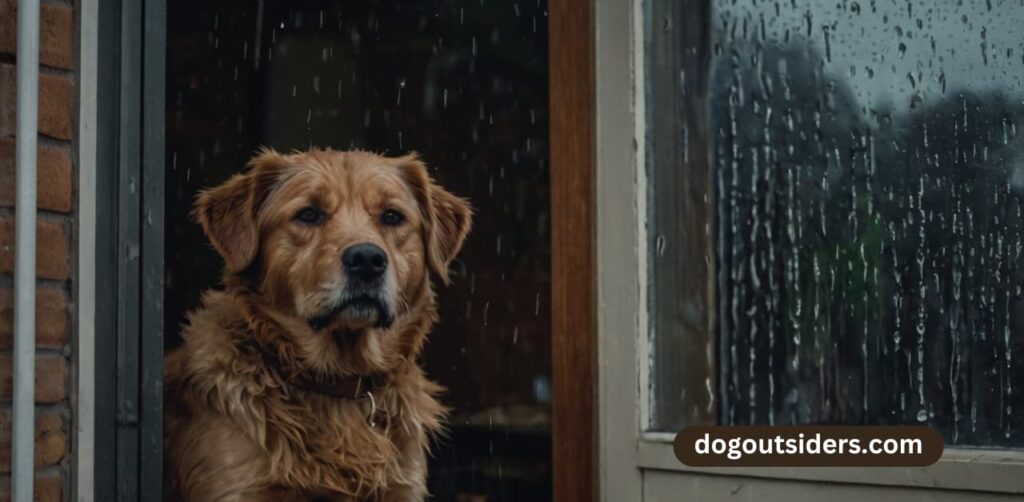
Gradual Progression
Start by moving the pee pad gradually closer to the door over a week to encourage outdoor peeing. This helps your dog associate going outside with the potty routine.
Transitioning an older dog from indoors to outside requires patience and consistency. By slowly moving the pee pad towards the door, you’re helping them make the connection between peeing outside and indoors.
Consistent Commands and Rewards
Use a consistent command like “Go potty” when taking your dog outside. Reward them immediately after they pee outdoors to reinforce this positive behavior.
When transitioning your dog from pee pads to outside, maintaining a consistent routine is crucial. By using a specific command each time they go outside, such as “Pee time,” you’re helping them understand what is expected of them.
Leash Training
Introduce your dog to wearing a leash indoors before heading out. This helps them get accustomed to the feeling of being on a leash, making outdoor walks more manageable.
Incorporating leash training into the transition process can be beneficial for older dogs not used to going outside. It allows them to feel secure and controlled during their outdoor bathroom breaks.
Age and Potty Training Possibilities
Bladder Control
Older dogs can experience a decline in bladder control due to aging, leading to difficulties in holding urine for extended periods. This can result in accidents indoors.
Mobility Challenges
Mobility issues such as arthritis can make it challenging for older dogs to go outside to pee. Reduced mobility may hinder their ability to reach the designated potty area.
Health Management Techniques
Implementing special management techniques can help address health-related potty training challenges in older dogs. This may include more frequent potty breaks and adjustments to their environment.
Personal Insight:
I found that establishing a consistent routine with scheduled potty breaks helped my senior dog manage his bladder control issues effectively. Creating easy access to the outdoors by installing ramps or steps improved his mobility for bathroom trips.
Breed Influence on Training Success
Breed Characteristics
Different dog breeds exhibit varying responses to potty training methods, influenced by their inherent characteristics. For instance, Labrador Retrievers are known for their intelligence and eagerness to please, making them relatively easy to train compared to more independent breeds like Siberian Huskies.
Understanding the natural tendencies of specific breeds can significantly impact the success of training an older dog. By recognizing that Chihuahuas, for example, may require more patience and consistency due to their small size and sometimes stubborn nature, owners can tailor their training methods accordingly.
Tailored Approaches
Adopting breed-specific approaches can enhance the outcomes of potty training efforts. For breeds with high energy levels like Border Collies, incorporating regular exercise into their routine can help reduce accidents indoors by keeping them physically stimulated and mentally engaged.
When dealing with a senior dog from a puppy mill, such as a Lab mix, gentle reinforcement techniques combined with a structured schedule can be particularly effective in encouraging positive bathroom behaviors.
Personal Insights
I found that when training my own mixed breed rescue dog, a consistent routine and using positive reinforcement were key in overcoming initial reluctance to go outside. Understanding her breed mix helped me tailor my approach effectively.
My experience with professional guidance from a certified dog trainer also highlighted the importance of patience and persistence when working with dogs of different breeds. Their insights on breed-specific behaviors proved invaluable in achieving successful training outcomes.
Mastering Positive Reinforcement
Consistency
Consistency is key when training older dogs. Reward good behavior every time they go potty outside.
Maintaining a consistent routine helps older dogs understand what is expected of them. Use the same command and praise each time they successfully go outside to pee. This repetition reinforces the desired behavior over time.
Patience
Patience is crucial when dealing with older dogs who may take longer to learn new habits. Provide ample time for them to adjust to the new routine.
Older dogs may need more time to unlearn old habits, especially if they have been accustomed to going potty inside for a long time. Be patient and understanding during this transition period.
Special Treats
Using special treats as a reward can be highly effective in encouraging older dogs to go outside to pee. Choose treats that are particularly enticing for your furry companion.
When introducing a new behavior, such as going potty outside, offering a special treat can motivate older dogs to repeat the desired action. The excitement of receiving a delicious treat reinforces the positive association with outdoor potty breaks.
Routine for Successful House Training
Daily Routine
Establish a consistent daily routine for your dog to support potty training success. Take your dog outside multiple times a day, especially after meals and playtime.
Create a schedule that includes specific times for potty breaks and feeding to help your dog understand when it’s time to go outside.
Maintain a structured environment by designating specific areas in your home for eating, playing, and resting. Consistency is key to successful house training.
Regular Potty Breaks
Schedule regular potty breaks throughout the day to prevent accidents indoors. Take your dog out first thing in the morning, before bedtime, and every few hours during the day.
Engage in playtime after potty breaks to reinforce positive behavior. This helps your dog associate going outside with fun activities.
Reward your dog with treats or praise when they eliminate outside. Positive reinforcement encourages good behavior and strengthens the bond between you and your pet.
Structured Environment
Set up a designated potty area outside where your dog can relieve themselves. Use verbal cues such as “go potty” to signal what you want them to do.
Avoid punishing your dog for accidents indoors as it can create fear and confusion. Instead, clean up accidents with an enzymatic cleaner to remove odors completely.
Create a comfortable living space for your dog in your home, ensuring they have access to water, food, toys, and a cozy bed. A comfortable environment promotes well-being and reduces stress.
Recognizing Bathroom Signals
Importance of Cues
Recognize your older dog’sbathroom signals promptly to avoid accidents in the house. Watch for subtle signs like restlessness or sniffing around. Respond quickly to these cues to reinforce good bathroom habits.
Pay attention to any changes in your dog’s behavior, as they may indicate the need for a bathroom break. Look out for signs such as circling or whining, which are common indicators that your dog needs to go outside.
Prompt Response
When you notice your older dog showing signs of needing a bathroom break, act swiftly. Take them to their designated potty spot immediately. Use a consistent command such as “Go potty” to help them understand what is expected of them.
Establish a routine for bathroom breaks, ensuring that your dog has regular opportunities to relieve themselves throughout the day. This consistency helps prevent accidents and reinforces good potty habits.
Reinforcing Good Habits
Praise and reward your older dog when they successfully go to the bathroom outside. Positive reinforcement encourages them to continue exhibiting the desired behavior. Give them a treat or offer verbal praise whenever they use the right spot.
Create a safe space for your older dog to go potty, ensuring that the area is easily accessible and free from distractions. By providing a comfortable and familiar environment, you can help them feel more at ease during bathroom breaks.
Personal Experience:
I found that establishing a clear routine for bathroom breaks helped my older dog become more consistent with their potty habits. By responding promptly to their signals and offering positive reinforcement, I noticed a significant improvement in their behavior over time.
Conclusion:
Understanding why older dogs resist going outside to pee, decoding their behavior, and mastering positive reinforcement are crucial in successfully transitioning them from pee pads to outdoor potty. Recognizing bathroom signals, establishing a routine, and considering breed influences can significantly impact the training process. Age should not deter efforts; with patience and consistency, older dogs can learn new habits. By incorporating these strategies, one can create a conducive environment for effective potty training.
To ensure success in training older dogs to go outside to pee, commit to consistent routines, positive reinforcement, and attentiveness to your dog’s needs. Remember that each dog is unique, requiring tailored approaches. With dedication and understanding, you can help your older dog overcome reluctance and establish healthy outdoor potty habits.
Frequently Asked Questions
Older dogs may resist going outside to pee due to health issues like arthritis or cognitive decline. They might also find it uncomfortable due to extreme weather conditions or fear of unfamiliar surroundings.
Observe your dog’s body language and vocal cues. Signs like circling, sniffing, or whining indicate they need to go out. Understanding these signals helps anticipate their needs and prevents accidents indoors.
Yes, it is possible to potty train older dogs with patience, consistency, and positive reinforcement. Establish a routine, use rewards for good behavior, and supervise them closely to guide them towards successful house training.
Breed characteristics can affect training success. Some breeds are more stubborn or independent, requiring different training approaches. Understanding your dog’s breed traits helps tailor your training methods for better results.
Watch for cues like pacing, scratching at the door, barking, or suddenly becoming restless. By paying attention to these signs and responding promptly, you can help your dog communicate their need to go outside effectively.


